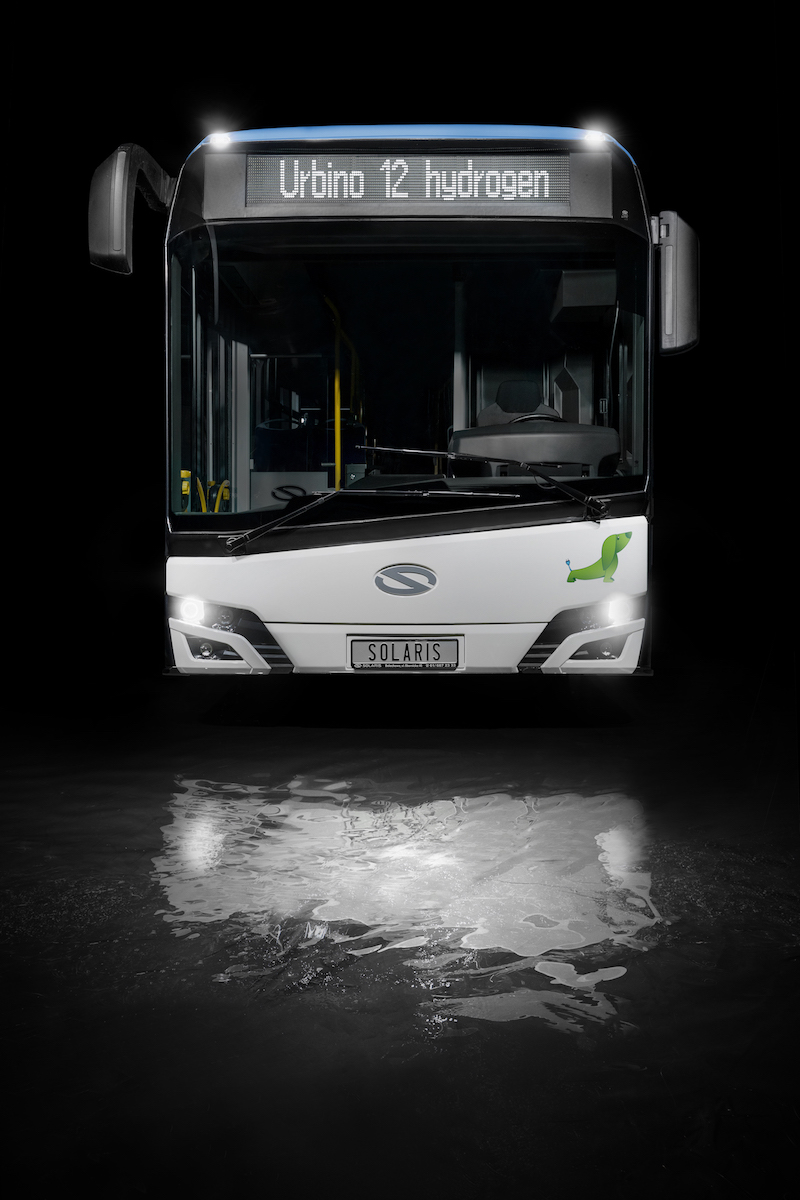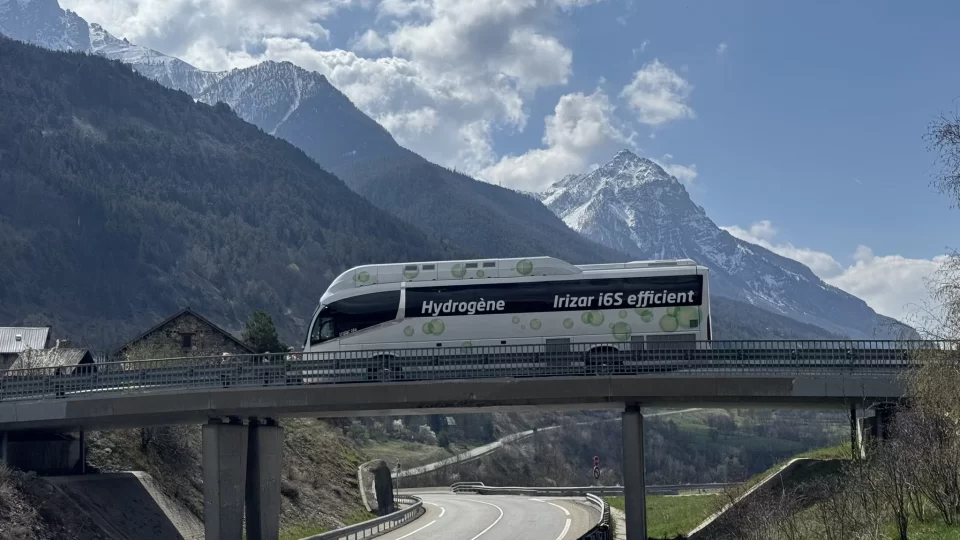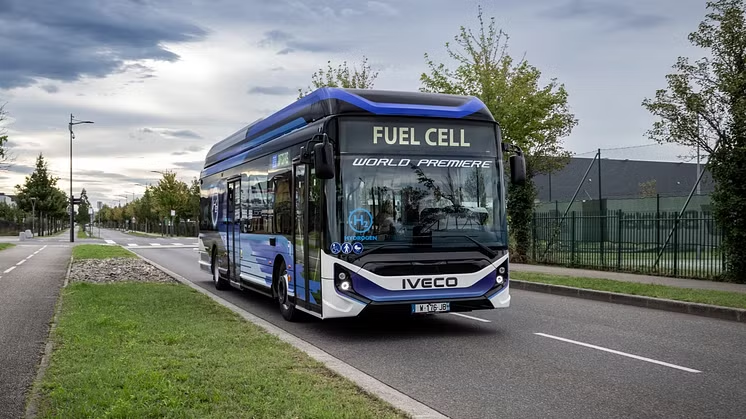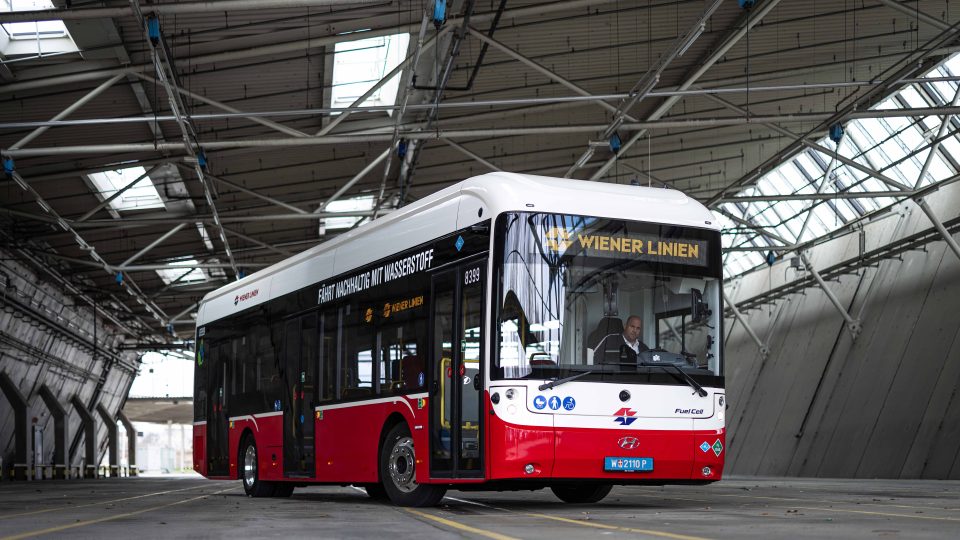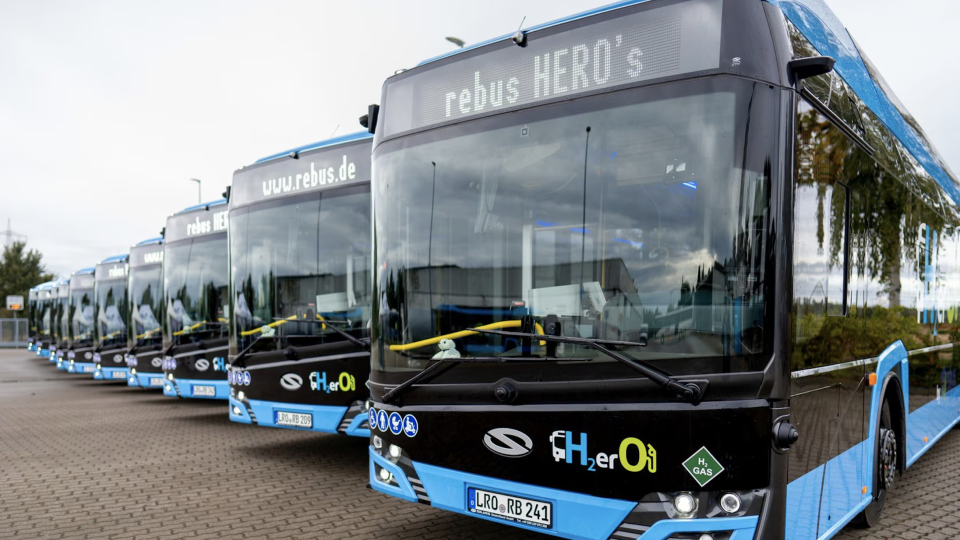Solaris wins 12 fuel cell buses in Bolzano. The first order for the Urbino hydrogen
The presentation is yet to come but the first contract has been achieved. The Italian city of Bolzano (capitol city of South Tyrol province, close to the border with Austria) is the very first one to order Solaris Urbino 12 hydrogen buses. The model is going to be unveiled next week at the UITP Global Public Transport […]
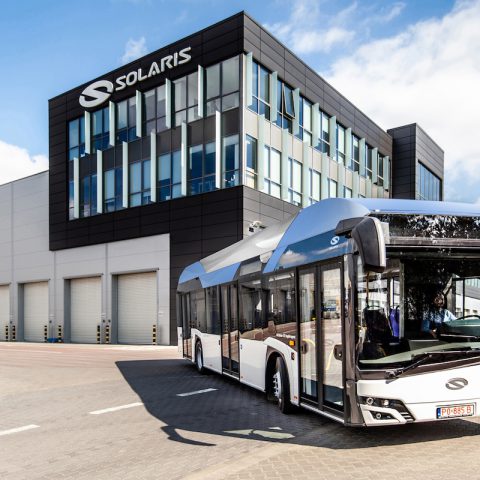
The presentation is yet to come but the first contract has been achieved. The Italian city of Bolzano (capitol city of South Tyrol province, close to the border with Austria) is the very first one to order Solaris Urbino 12 hydrogen buses. The model is going to be unveiled next week at the UITP Global Public Transport Summit 2019 in Stockholm.
In Bolzano, twelve Solaris hydrogen buses will follow the last year’s delivery of battery vehicles (four units). The contract, supported by EU funded JIVE project, includes an 8 year-long service and maintenance package. Solaris has been the only company to make a bid to the 12,8 million euros call for tenders.
CLICK HERE FOR THE ARTICLE
Solaris to unveil the Urbino 12 hydrogen at UITP summit in Stockholm
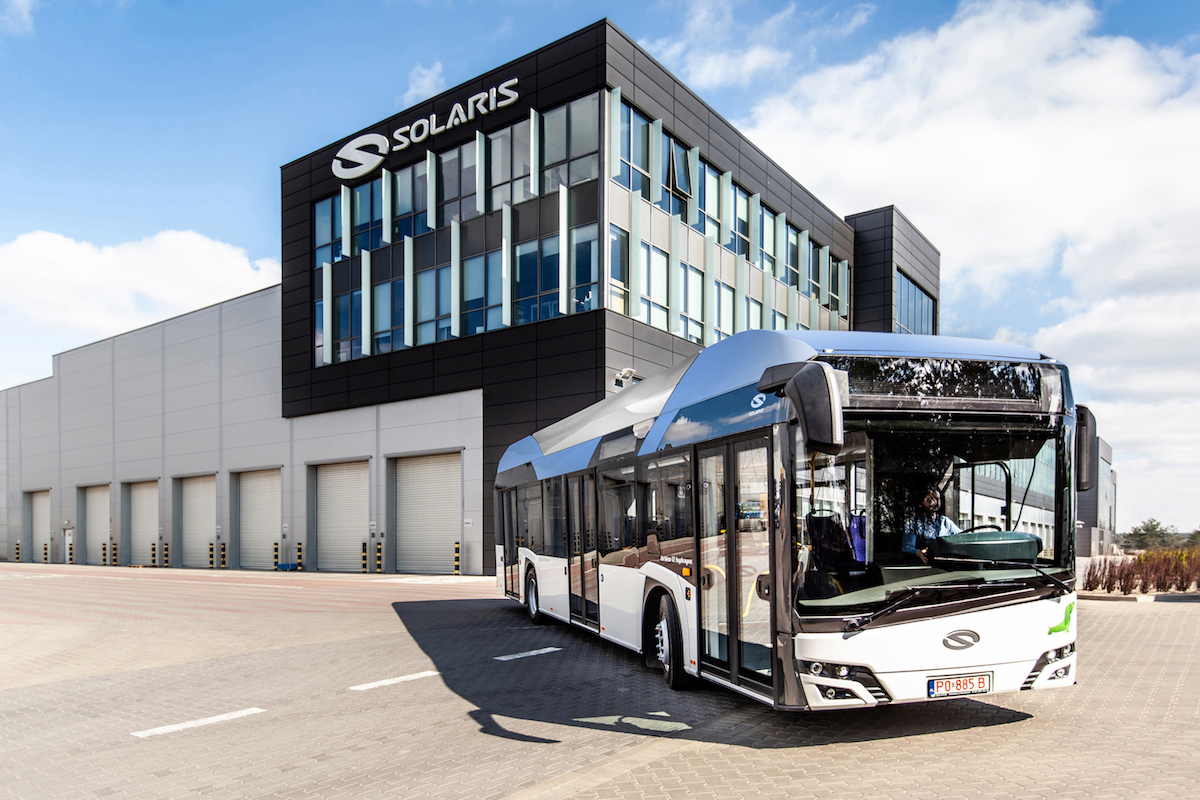
SASA Bolzano committed to green fleet
SASA Bolzano will be the first customer to receive the newest development of Solaris, the Urbino 12 hydrogen. The public transport company already held a pilot with hydrogen buses, precisely five Mercedes Citaro fuel cell, in 2014, in the framework of EU funded CHIC (Clean Hydrogen in European Cities) project (in the picture below). The vehicles are still in operation.
The energy stored in hydrogen is directly fed into the driveline of the vehicle. Hydrogen technology used for power generation will enable buses to traverse even longer distances completely emission-free.
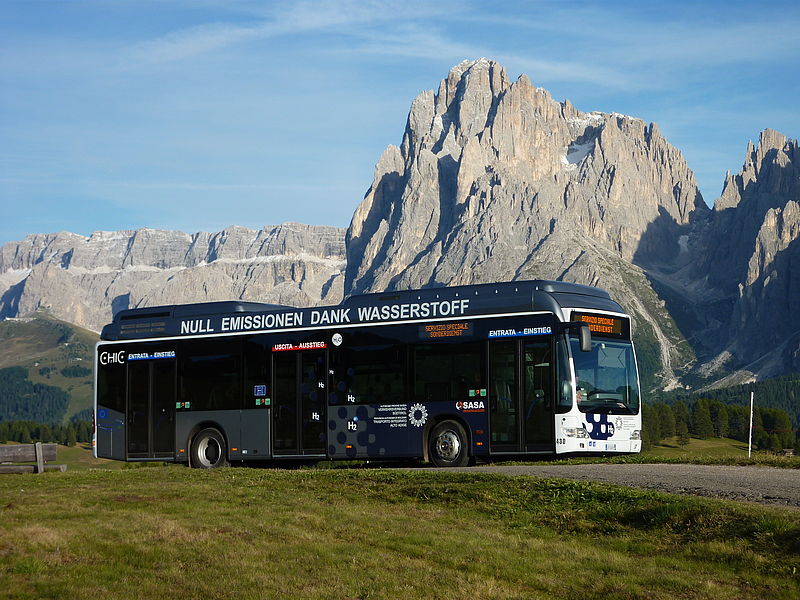
Solaris hydrogen bus at UITP Summit 2019
The vehicles will be equipped with 60 kW fuel cell system and Solaris High Power batteries. The battery is filled with energy derived from hydrogen and through the regenerative braking, though it is also possible to recharge it by means of a plug-in socket.
Complementing the driveline is, as usual, the ZF AxTrax mounted also on the Urbino battery electric. The axle features integrated electric motors (2 x 125 kW). In order to reduce energy use to a maximum, the vehicle will be equipped with a climate control system with a CO₂ heat pump that allows to use waste heat from the fuel cell.

Solaris hydrogen bus, range won’t be an issue
In a hydrogen fuel cell, electric power is generated in a process called reverse electrolysis and then passed on directly to the driveline. The sole products of the chemical reaction occurring in the fuel cell are heat and steam. Consequently, the vehicle does not generate any noxious substances whatsoever. Hydrogen is stored in composite roof tanks. According to the manufacturer, the bus will be capable of covering up to 350 km on a single refill.
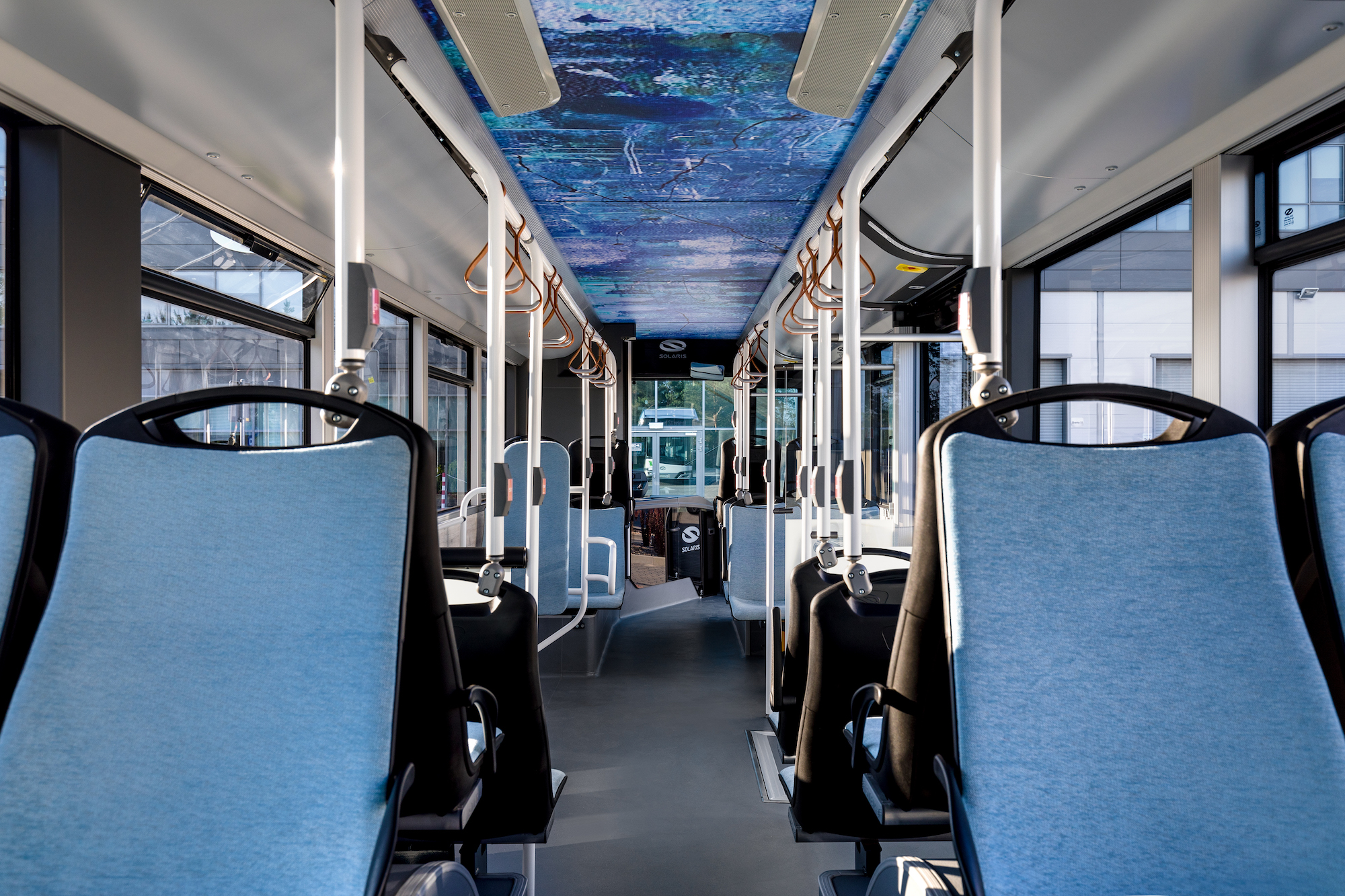
Part of the contract is also a special drivers’ and workshop personnel’s training emphasizing the safety aspects of using and servicing hydrogen vehicles, Solaris points out.
«Bolzano invests strongly in modern and clean public transport. I am very happy that Solaris can be a part of it delivering its newest zero-emission technologies. SASA already has our Urbino electric buses. Now Solaris and Bolzano go hydrogen» says Petros Spinaris, Deputy CEO of Solaris Bus & Coach S.A.
